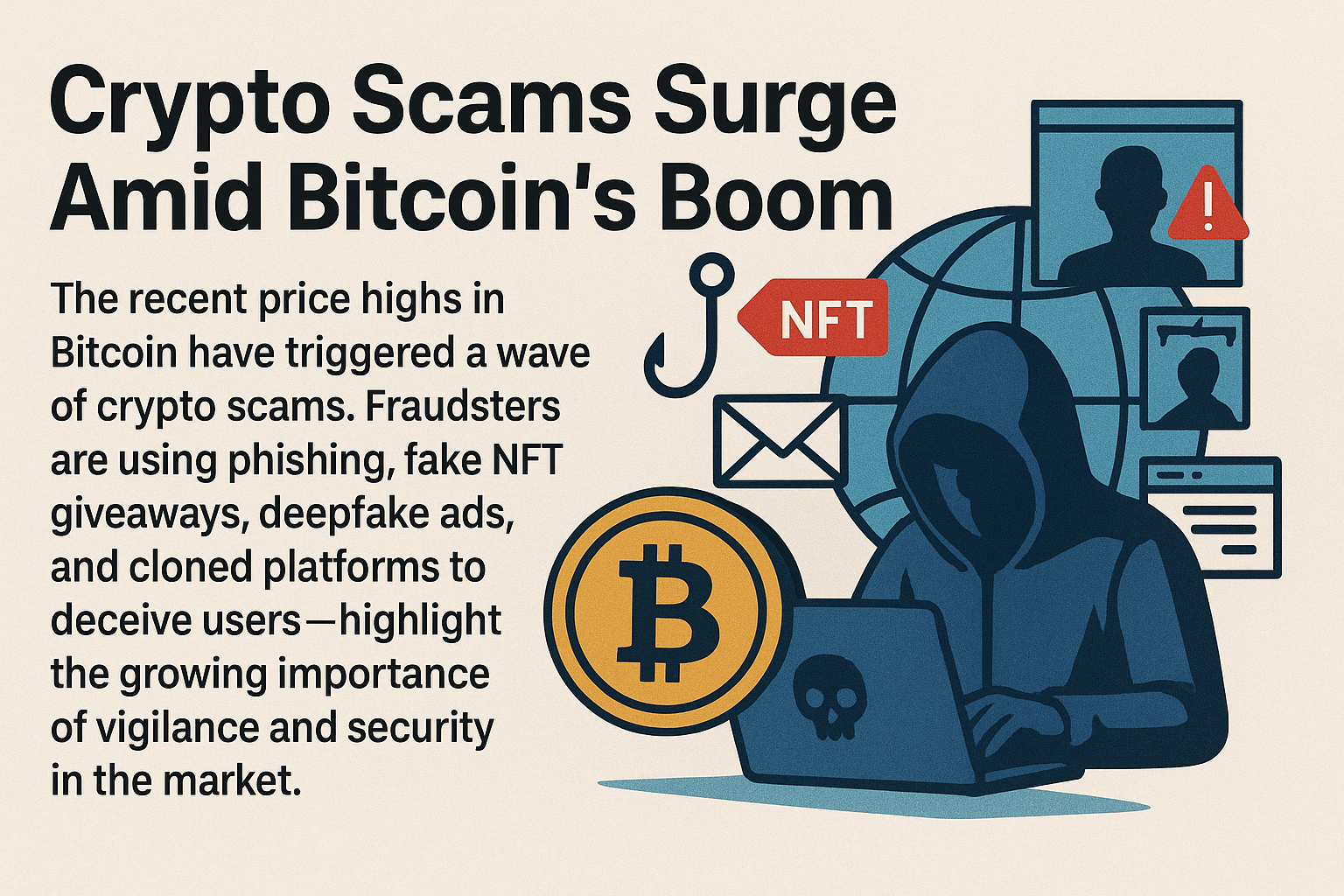As Bitcoin surges to new highs, the excitement around cryptocurrency has returned with full force. From retail investors to institutional players, millions are flocking back to the market, eager to ride the wave. Yet with this new wave of interest comes a familiar dark side: a sharp rise in scams. Fraudsters are capitalizing on the hype, using increasingly sophisticated tactics to deceive unsuspecting users.
The Perfect Storm: High Prices and High Risks
Bitcoin’s price rallies create a sense of urgency and FOMO (fear of missing out). This emotional environment is exactly what scammers thrive on. Newcomers eager to profit quickly often skip basic security checks, while even seasoned traders can be caught off guard by convincing schemes.
Common Types of Crypto Scams on the Rise
-
Phishing Attacks
Scammers send fake emails, messages, or pop-ups designed to trick users into revealing their private keys, passwords, or seed phrases. These often mimic legitimate exchanges or wallets, making them difficult to distinguish at first glance. -
Fake NFT Giveaways
With NFTs still in the spotlight, fake giveaways have become a popular lure. Victims are asked to connect their wallet or pay a small “gas fee” to receive an NFT, only to find their assets drained afterward. -
Deepfake Advertisements
Fraudsters now use AI-generated videos of famous entrepreneurs, CEOs, or influencers to promote fake investment opportunities. These realistic deepfakes can appear on social media, YouTube ads, or even legitimate-looking news sites. -
Cloned Platforms
Entire crypto exchanges or decentralized finance (DeFi) apps are being cloned with identical interfaces. Users may believe they’re interacting with a trusted platform when in reality, every click is feeding data to criminals.
Why Scams Are Getting Smarter
The tools available to fraudsters have advanced dramatically. AI-generated content, low-cost web cloning, and data leaks give scammers the ability to operate at scale. Meanwhile, the speed and finality of blockchain transactions mean that once assets are stolen, recovery is virtually impossible.
Staying Safe in a High-Risk Environment
While scams are becoming more sophisticated, investors and traders can take steps to protect themselves:
-
Verify URLs and Apps: Always double-check website addresses and download apps only from official sources.
-
Enable Multi-Factor Authentication: Add an extra layer of security to your exchange or wallet accounts.
-
Be Skeptical of “Too Good to Be True” Offers: Genuine giveaways rarely require you to connect your wallet or pay upfront.
-
Educate Yourself: Follow reputable security blogs, forums, or exchanges for alerts about new scams.
-
Use Hardware Wallets: Keep your long-term holdings offline where they are less vulnerable to online attacks.
The Bigger Picture
The surge in scams highlights a growing need for education and regulation in the crypto space. Exchanges and platforms must step up their efforts to warn users, while governments and cybersecurity firms are beginning to collaborate on tracking stolen funds. Still, personal vigilance remains the first and best line of defense.
As Bitcoin and other cryptocurrencies continue to mature, the stakes only get higher. The good news is that with awareness and caution, investors can protect themselves while still participating in the opportunities this market offers.




